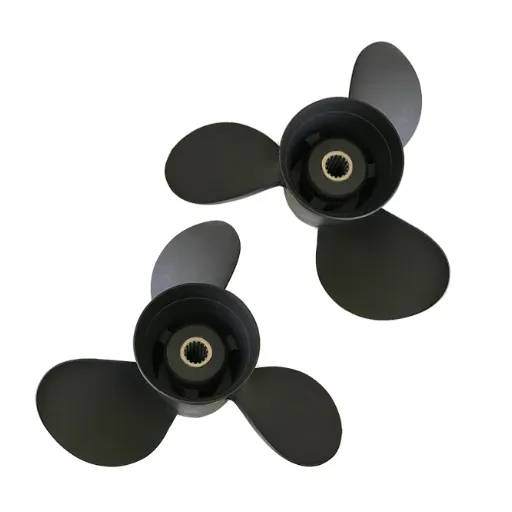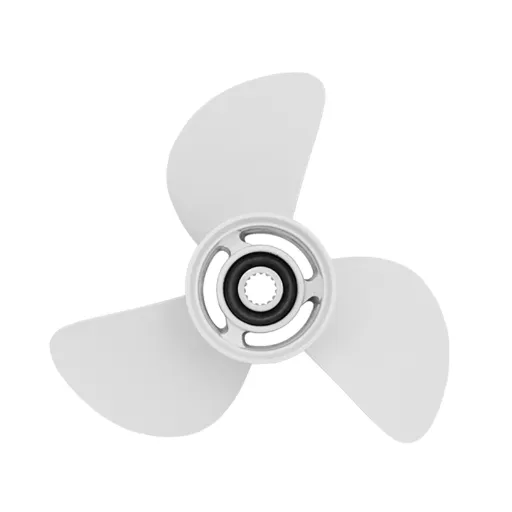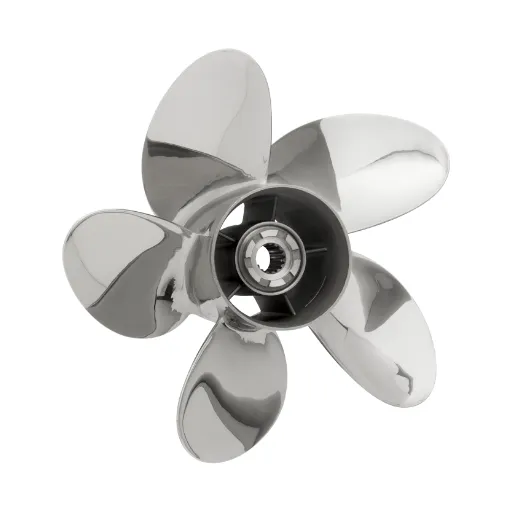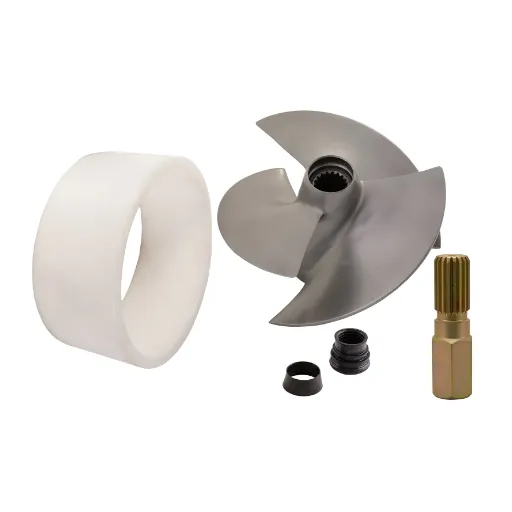Jet skiing combines speed, skill, and excitement and is one of the most thrilling ways to enjoy water. For a first-timer building confidence on the waves and stretching wings to master easy and subtle maneuvers, this guide is for you. In 2025 Tips and Tricks on How to Drive a Jet Ski for Maximum Fun, we take a step-by-step method toward taking you on a cruise like a pro. From how a jet ski works through safety essentials, techniques, and advanced methods, some of this fresh, practical advice will help make your experiences unforgettable. So, get ready to explore unlimited fun on water, because therein lies the beginning of the adventure!
Understanding the Basics of Jet Ski Operation

What constitutes a PWC?
The Personal Watercraft refers to any given fast recreational watercraft designed for use by an individual or small group, providing a thrilling ride across the water. Unlike traditional boats that use a shaft-propeller propulsion system, the PWC is an inboard-engine craft where moving parts, comprising a jet-pump motor, drive a pump. High-velocity water is expelled forward through a nozzle to propel these crafts essentially. Being small in size and nimble, they are extremely popular for water sports and casual cruising.
The present state-of-the-art jet skis, along with the PWCs, have a variety of systems for safety, fuel economy, and user comfort. They normally come with digital displays, GPS navigation, and an environmentally safe engine. Sit-down type jet skis can carry anywhere from one to three persons sitting, while stand-up types are for single riders who like an active and adventurous way of life. PWCs have become mainstream in marine recreation due to their accessibility, versatility, and an interesting blend of speed and fun for riders.
Overview of Jet Ski Components
A jet ski or a PWC contains many essential parts to ensure that it gives optimal performance, safety, and maneuverability in water. Each component’s role becomes critical in serving the performance jet skis are famous for:
Hull:
The hull constitutes the body of the jet ski and is designed to provide stability and buoyancy as it cuts through the water. Today, lightweight yet sturdy materials such as fiberglass or composite alloys are used to construct hulls, affording higher speed and better control.
Impeller and Jet Pump:
The impeller forms one part of the jet system, whereas the jet pump draws water in and expels it outward with the force necessary to push the jet ski forward. The system allows not only for empty speed but also fine control, making for a highly crisp ride.
Engine:
A jet ski runs on a compact, powerful internal combustion engine or an electric engine. The engines are designed to offer great horsepower, allowing them to accelerate quickly and achieve high speeds while also being energy-efficient.
Handlebars and Controls:
Mounted directly on the handlebars are various controls, including throttle levers and braking mechanisms, as well as the actual steering mechanism. These controls allow the rider to adjust speed, direction, and braking instantly for a seamless dual-riding experience.
Seat:
Ergonomically designed for long excursions, jet ski seats offer unparalleled comfort, being environmentally friendly due to the materials used, which range from water-resistant to water-repellent, some of which are padded to provide support for the rider.
Cooling System:
Water-cooled systems are, in all likelihood, what outfit most jet skis. Since water is sourced from the surrounding environment, it is used to maintain the engine’s temperature; hence, there is sustained performance even during prolonged periods of activity.
Intake Grate and Ride Plate:
The intake grate blocks debris from entering the jet pump, whereas the ride plate affects the sphere of the jet ski; jet ski handling is altered by water draining from beneath the craft.
Safety Features:
Advanced safety systems include emergency stop lanyards, which cut off the engine if the rider falls off, as well as optional life vests and safety alarms or navigation systems.
Display and Electronics:
The latest jet skis have digital dashboards that show real-time information on speed, fuel, and engine diagnostics. The high-end models possess GPS navigation and connectivity for added convenience.
Each of these parts, carefully engineered and maintained, helps to ensure the jet skis’ reliability, performance, and fun – hence their worldwide popularity as a tool for water sports and recreational activities. Understanding these parts and functions can help you choose a suitable model based on your performance expectations and riding style.
Safety and the Importance of the Lanyard
🚨 Critical Safety Feature
The lanyard is a major safety feature in jet ski usage, protecting the rider in the event of a sudden instance. Typically, this cord is fixed to the rider and an engine cut-off switch so that it acts to stop the engine automatically if the rider becomes separated from the vehicle. This immediate stoppage of the engine prevents the jet ski from continuing unchecked, serving as a safety measure against injury to the rider or others nearby.
In modern times, lanyards have also been enhanced to improve their ease of use and reliability. Many new-style kill switches are wireless, offering a higher level of comfort without compromising function. These systems are designed to trigger within seconds of any disconnection, thereby ensuring a swift shutdown of the engine. Incorporating the lanyard in your standard safety procedures may be a regulatory requirement in many areas. Furthermore, it plays a crucial role in establishing a secure foundation for the operation of jet skis.
Preparing to Ride a Jet Ski

Choosing the Right Jet Ski for Beginners
Choosing a jet ski suitable for beginner activities offers the chance to strike a balance between usability and safety, while keeping costs within a specific limit and providing enjoyment on the water. Primarily, entry-level jet skis are built with simplicity in mind: they provide smaller engines, stable hulls, and controls that aren’t too complicated, so novice riders can gain confidence.
For instance, Rec-Lite models like the Sea-Doo Spark and Yamaha EX are inexpensive and compact enough to be easily handled by someone without experience. These jet skis offer engine choices ranging from 60 to 100 HP, delivering enough power for some fun without intimidating beginners. Safety features, such as intelligent brakes that shorten stopping distance and learning keys that limit speed until skill levels increase, are central to allowing safe experiences while still learning to ride.
When choosing a jet ski, thought must be given to weight capacity and seating. Two- or three-passenger models offer enhanced stability and can grow as the user’s needs develop with confidence, such as a Kawasaki Jet Ski STX-160. Features like good fuel economy and low maintenance should also be on the priority list so that a beginner sees long-term benefits and cost-effectiveness from joining the sport.
Essential Safety Equipment for Jet Ski Riders
Ensuring safety while jet skiing is essential regardless of whether you are a beginner or an experienced rider. The number one item of equipment is a high-quality, U.S. Coast Guard-approved personal flotation device (PFD). Modern PFDs incorporate designs that allow for comfort and freedom of movement, while also providing buoyancy in case of emergencies, thereby reducing the risk when out on the water. A helmet that fits well is a crucial piece of safety gear, protecting the head in the event of sudden impacts or unexpected falls.
Essential Safety Checklist:
- Personal Flotation Device (PFD) – U.S. Coast Guard-approved
- Safety Kill Switch Lanyard – Engine cut-off protection
- Whistle or Signaling Device – Emergency communication
- Protective Apparel – Wetsuits or impact vests
- Waterproof Storage – For essentials and first-aid kit
- Well-Fitting Helmet – Head protection
To be able to communicate and alert others in case of an emergency, it is essential to have a reliable whistle or other signaling device. A safety kill switch lanyard is another highly regarded safety feature among jet ski riders; this safety switch kills the jet ski engine if the operator becomes separated from the jet ski, thus preventing accidents caused by runaway crafts. Protective apparel, such as wetsuits or impact vests, protects against abrasions, hypothermia, and UV rays. Waterproof containers for essentials like cell phones, emergency flares, and first-aid kits round out storage for preparation against unpredictable situations. This equipment goes a long way toward providing safety and enhancing the overall experience on the water.
Understanding Local Regulations and Safety Courses
Every law must be satisfied for those operatives of a jet ski, for their protection and the protection of others. Since laws vary from state to state, standard requirements may include speed restrictions, minimum ages, and designated water areas. For example, many regions prohibit wake creation to protect wildlife and minimize water-line erosion. Some require a minimum age to operate a personal watercraft, and others require a license.
Beyond learning about and following the rules, participating in an approved safety course offers further benefits. Typical subjects discussed in these programs include navigation rules, emergency procedures, and the operation of a craft in differing water conditions. Research suggests that formally trained operators are less involved in accidents and, therefore, should be a requirement for both new riders and seasoned riders. Besides just allowing riders to comply with local regulations, these courses enable them to become comfortable in using their knowledge and skills to make informed decisions, therefore ensuring safe and enjoyable outings.
Step-by-Step Guide to Operating a Jet Ski

Starting Your Jet Ski: A Series of Steps
Prepare for Launch: Have your life jacket with you, one that is certified by the proper agencies, along with your safety whistle, lanyard, or kill switch. Be sure your jet ski has a full tank of fuel and verify that there are no damage or repairs needed. Also, check that the water conditions and weather forecasts are suitable for your outing.
Attach the Safety Lanyard: Attach this to your wrist or to a designated point on your life jacket. It will terminate the jet ski’s engine when you drop off, thus providing safety to you in addition to stopping a jet ski from running unattended.
Get on the Jet Ski: Approach the jet ski from behind, carefully stepping onto it. Keep balance by holding firmly onto the handlebars while positioning yourself on the seat. If you are a novice or are riding in choppy waters, begin with only one rider for better stability.
Turn on the Ignition: Insert the key into the ignition and turn it to activate the engine. More modern jet skis may use a digital key fob or buttons requiring a code to start. Follow the specific manufacturer’s instructions for your model to power up the engine.
Starting the Engine in Shallow Water: Place the jet ski in the water, ensuring the intake grate is clear of debris, such as seaweed or rocks. Start the engine while in at least 3 feet of water to prevent damage to the pump erosion system. Gently rev the engine to check if it responds appropriately.
Check the Controls: Familiarize yourself with the throttle, brakes (if applicable), and steering before accelerating. Test these controls under low power to ensure that they respond correctly. Learning modes or speed-limiting settings are now available on many modern jet skis and can be particularly helpful for beginners.
Engage Slowly: Apply slow pressure on the throttle to gently allow the craft to set forward. Keep your hands steady on the handlebars while keeping your eyes on the waterway and observing for any vessels, swimmers, or obstacles.
Following each step in this guide will make your first start on the jet ski smooth and safe. Always comply with local boating laws and prioritize safety at all times while enjoying life on the water.
Basic Controls: Accelerating, Steering, and Stopping
Accelerating
Let us say that safety and performance highly depend on the operation of a jet ski. Utilize the space on the right side of the handle to place the throttle. Press it gently to accelerate and maintain control. Try not to punish it with sudden jerks, as this may cause jet-ski instability or you to lose balance, especially if you are just a beginner.
Steering
Steer by simply turning the handlebars in the direction you want to go. Most jet skis nowadays operate based on the relationship between throttle control and steering, meaning that less throttle results in reduced turning capability. Hence, keep your throttle constant while turning for efficient maneuvering.
Stopping
When stopping, jet skis typically apply reverse thrust, which is also achieved by releasing the throttle and coasting. Specific versions incorporate a sort of brake system to facilitate fast stops—be familiar with the features available on your jet ski. Always practice controlled stopping in an open area to build your confidence and avoid collisions.
Smooth acceleration, precise steering, and controlled stops combine to provide a safe and enjoyable ride.
How to Safely Launch and Dock Your Jet Ski
Launching Your Jet Ski
Launching and docking a jet ski are demanding tasks that require preparation, precision, and a good understanding of the surroundings. For launching, tie the jet ski firmly to the trailer before turning into the ramp. Look for any obstacles or debris in the water, and check if the ramp area is clear of other vehicles or vessels. When you are ready, slowly reverse your truck down the ramp until the trailer is partially submerged in the water. Gently release the straps and lower the jet ski down with the winch. Put on your life jacket and start the engine with the safety lanyard attached.
Docking Your Jet Ski
Slow down while approaching the dock and angle your craft towards it. Ideally, idling speed is best. Short bursts on the throttle may allow the tiniest adjustments while still maintaining control over direction. Check the position of the sun or water currents as they can come into play in positioning. Carefully use the reverse controls on your jet ski if you need to back it into the dock. When close enough, use your hands or dock bumpers to bring the jet ski in and avoid any sudden movements. Tie your jet ski off securely to the dock with docking ropes that will keep it steady and protected from waves or traffic.
Regular practice of the above will help to boost your confidence and guarantee safety on all of your outings.
Tips for a Fun Jet Ski Ride

Best Practices for Riding a Jet Ski
The jet ski experience requires a few best practices to ensure it is safe, pleasurable, memorable, and efficient. Most importantly, always wear the appropriate safety gear: life jackets, wetsuits, or rash guards, all of which must be well-fitted. These would protect you against the elements, as well as accidents, from damaging sun rays or cold water temperatures.
Essential Riding Guidelines
Weather and Water Awareness: Keep an eye on the weather and water for safe outings. Calm waters and clear skies set the stage for a smooth ride, whereas heavy winds and choppy waves pose a danger. Know your local laws and regulations, including areas designated as no-wake zones, speed limits, and restricted zones, to remain law-abiding and avoid hefty fines.
Throttle Management and Balance: Another essential consideration is throttle management and balance. Gradually applying the throttle stabilizes the jet ski when cornering or riding through congested areas. Always be aware of your contingencies, including maintaining a safe distance from other vessels, swimmers, or obstacles. If the jet ski is equipped with mirrors, use them.
Fuel Planning: Know your fuel level during the ride; running out of gas might leave you stranded miles from shore. Always plan the route around available gas, and if feasible, carry a few extra gallons. Lastly, for an endless and fun ride that you’ll love to repeat, ensure your jet ski is in prime shape by performing routine maintenance procedures. These include checking for leaks, cleaning the hull after every trip, and ensuring that all mechanical parts are functioning properly.
Exploring Popular Jet Ski Adventure Spots in 2025
The year 2025 looks to be exciting for jet-ski enthusiasts, as these lovely destinations present a perfect spectacle of scenic beauty and adrenaline-filled aquatic activities.
Miami, Florida
Miami, Florida, is a good example; in short, those crystal waters and the vivacious beaches serve as an excellent setup for those adrenaline-rush jet-ski rides. The area is ideally suited to cater to the jet skiers of all skill levels, from those learning their craft in the calm waters of Biscayne Bay to the pros going big in the deep Atlantic waters.
The Maldives
If you wish to venture somewhere exotic, the Maldives still tops the list. The vivid coral reefs and turquoise lagoons create an incomparable setting for exploration. Interestingly, many resorts in the Maldives now offer guided jet ski tours, accompanied by seminars on the ecosystems surrounding the islands.
Lake Tahoe
Lake Tahoe is becoming increasingly well-known as a freshwater destination for jet skiing in the Pacific region. With extensive mountain views and crystal-clear waters, the lake retains serene island qualities, along with high-adrenaline jet ski rides. Visitors so inclined in Summer 2025 will find hiking nearby to complement the overall outdoor experience.
Dubrovnik, Croatia
Dubrovnik, on the other hand, serves as a window to the Adriatic Sea, offering a blend of history and adventure below. Jet skiing along the coastline allows for the discovery of hidden coves, captivating caves, and ancient defenses from a unique vantage point. Dubrovnik remains a top choice to combine history, culture, and water sports into one.
These destinations will be the talking points worldwide come 2025, with something special for every jet skier. Ranging from the calm waters to the open seas, there will be no shortage of stunning places for jet ski riders to wet their skis.
How to Handle Common Challenges While Riding
Jet skiing is fun, but it also has its own set of challenges, just like any other water sport. Here are some basic pointers on how to deal with some of the issues to maintain safety and remain entertained:
Navigating Rough Waters
Choppy conditions can be intimidating to ride through. To manage rough waters, keep a steady speed so that you do not lose control while going over the waves. Bend your knees a little to absorb shocks and keep your weight centered on the jet ski. Always check the weather reports before heading out to sea.
Dealing with Engine Problems
Mechanical issues can arise at any time. In general, maintenance is issued to prevent breakdowns. Check the jet ski before leaving for things such as fuel level, oil, throttle operation, and brake operation, etc. You should carry a basic repair kit to address any minor problems, if possible, in case of emergencies.
Preventing Capsizing
Capsizing often occurs during sharp turns or excessive leaning. To avoid such scenarios, always balance weight and practice turning gently through speed. If the watercraft overturns, it is best to re-enter from the rear to prevent further destabilization.
Avoiding Collisions
Increased awareness is necessary for navigating busy waterways and crowded areas. Follow local rules and maintain a safe distance from other riders or watercraft. Effective ways to avoid collisions include signaling with your hands and staying focused while navigating.
Fatigue Setting In During Longer Rides
Your body, especially your arms and legs, may become weary during longer rides. To keep fatigue at bay, take breaks at allowed intervals and ensure you stay hydrated. Many ergonomic jet skis come fitted with seats or handlebars that reduce strain, making it worthwhile to look for these features.
Visibility Considerations
Poor visibility can significantly challenge one’s ability to navigate hazards due to fog, rain, or low light conditions. Outfitting your jet ski with adequate lighting and reflective material will keep you visible. Marine navigation instruments that work with GPS are truly remarkable, especially when navigating through the sea in low visibility.
Though there’s some thrill in gathering challenges along the way, making progress requires foresight and preparedness. Thrills and security are assured with proper preparations, regular maintenance, and adherence to safety procedures.
Maximizing Your Jet Ski Experience

Joining the Jet Ski Community: Events and Groups
Beginning jet skiing is immediately about getting hooked because it teaches one how to appreciate the pleasure of working with others, sharing the passion. The jet ski community, therefore, has enriched my enjoyment of water sports. I learned about local or regional joint ride group events, as well as competition or charity run events for the sport, which unite jet ski enthusiasts. Such events provide me the opportunity to explore new waterways and meet with experienced riders who willingly share their knowledge about techniques, tips, and tricks.
Back in the day, the Internet was truly a vast globe with about twenty islands sprinkled across it. Many jet ski forums have come and gone since then, but today, one can find numerous jet ski groups catering to every interest and skill level through social media or online forums. From beginner-friendly groups to highly specialized high-performance groups, it truly offers a wide range of options. These groups organize chatting events, meet-ups, and even multi-day adventures, bolstering camaraderie among the members. Being part of these communities, I have helped other riders with advice, enjoyed friendly competition, and shared resources such as maintenance tips and gear recommendations that have made me a better and more confident rider.
Attending a function and connecting with groups certainly broadened my horizons and created new friendships that extend beyond the water. It’s not about riding anymore-it’s about being part of this thriving, happy forest of Adventurers. From jet skiing alone to grouping up in jet skiing, the jet ski community has a bit of something for everyone.
Upgrading Your Jet Ski: Accessories and Enhancements
With jet ski upgrades, I’ve learned that opting for the right accessories and enhancements can significantly enhance performance and enjoyment. The first thing I considered was upgrading the sound system, and being able to hear my favorite playlist while riding adds a whole new dimension to the experience. Waterproof speakers with Bluetooth capability are essential here, and there’s plenty of reliable equipment available designed for water-resistant use conditions.
Navigation Upgrades
Another must-have for me has been a GPS. Whether I’m exploring new waterways or venturing out further from shore, having a reliable navigation tool ensures I stay on course and feel more confident during longer rides.
Storage Solutions
Additionally, I have added storage accessories for my jet ski, including waterproof containers and dry bags. This type of storage solution has been a lifesaver for transporting essentials like snacks, a first-aid kit, or extra gear without the worry of water damage.
Performance Enhancements
Performance upgrades have also been a part of my customization. Adding an aftermarket air intake system and stainless steel impellers has increased speed and made maneuverability slightly easier. Such changes do more than improve performance; they make every ride an exciting adventure.
Upgrading my jet ski means tailoring it to my needs and preferences, ensuring every outing is as enjoyable, safe, and effective as possible.
Case Studies: Memorable Jet Ski Adventures
Florida Keys Adventure
One of my most unforgettable and thrilling jet skiing experiences was during my time in the Florida Keys. The turquoise waters stretched far away as far as the eye could see, and the weather was perfect for roaming about anywhere. I had recently upgraded my jet ski just a few weeks earlier, so this was the ideal day to witness the enhanced performance with my own eyes. We navigated through mangrove tunnels and open waterways, the turning increasing the adrenaline rush. It was both more wonderful and easier to cover long distances due to the upgrades and added stability, which gave me enough confidence in rougher parts. An ecstatic moment saw us coming across a pod of dolphins swimming alongside us — a magical memory that truly encapsulates why I enjoy jet skiing.
Pacific Northwest Lake Adventure
Another incredible memory was formed at a lake day in the Pacific Northwest. The peaceful environment found in beautiful contrast with the excitement of slicing through the crisp Eurasian waters. This adventure was the story of intact stainless steel impellers versus my jet ski, which allowed me to navigate easily between narrow channels and open water with ease. The surrounding scenery of towering pines and mountains in the distance was breathtaking. The day was concluded by anchoring near a small cove and soaking in the tranquil vibes—a perfect juxtaposition of high-speed fun and easy-going peace.
Experiences such as these set my love for jet skiing into stone and gave reason why customization was the way to go. Each trip presented a combination of nature and adventure, alongside the sheer pleasure of riding a finely tuned machine, making these trips clearly some of the most enriching and memorable experiences.
Reference Sources
-
The Basics of Riding a Jet Ski: Mastering Turns and Stops – BoaterExam
Offers practical advice on mastering turns and stops for a safer and more enjoyable jet ski experience. -
How to Drive a Personal Watercraft (PWC) – Discover Boating
Provides 10 essential tips for driving a jet ski, including safety courses and registration requirements. -
How to Drive a Personal Watercraft | Sea-Doo
Explains steering, turning, and other fundamental controls for operating a jet ski effectively. -
Jet Ski Safety: Essential Tips for A Great Ride on The Water – North Tahoe Watersports
Covers safety tips, gear recommendations, and local regulations to ensure a fun and secure ride. - View our blog for more details.
Frequently Asked Questions (FAQs)
What does jet ski operation mean to a beginner?
For the beginner jet ski operator, it is essential to become familiar with the different controls on the jet ski, including the throttle and handlebars. First, put on a life jacket and strap the lanyard to your wrist. Now that everything is ready, press the start button and slowly release the throttle to begin the acceleration. Try to stay balanced and centered in the seat to maintain your stability. Try to turn the jet ski by moving your weight and using the handlebars to steer.
How does one safely operate a jet ski amidst boat traffic?
Be cautious of heavy boat traffic when riding a jet ski; always keep a safe distance from other vessels. Keep an eye out for other boats, as a collision can severely harm a jet ski, which is much more maneuverable than a large boat. Be aware of your jet ski speed and reduce it if necessary to cruise safely. In the presence of heavy boat traffic, it is better to coast your jet ski than to throttle up and try to outrun the problem. Boating safety courses can also be beneficial by providing tips on safely operating boats in crowded waters.
What should I know about jet ski safety equipment?
First of all, safety should be the utmost concern while riding a jet ski. Wearing an appropriately fitted life jacket is essential for every rider. Other vital gear to consider includes a whistle for signaling and a kill switch that shuts off the engine in the event of an emergency. Ensure your jet ski has a functioning jet nozzle and understands its proper use, as it could be a matter of safety. Prepare your trip with sufficient personal flotation devices. Always test your equipment before heading to the water.
How can I improve my jet ski skills?
Experience in itself comes with practice and training. Training practice should include turning and stopping. Practice your acceleration and throttle control. Building confidence is easier when you go through a step-by-step guide for beginners. Use enemy-free open water to get a feel for the jet ski. You can also rent different jet ski models, such as stand-up or sit-down, to determine which one feels most comfortable.
What should I do if I get lost while riding my jet ski?
If you do happen to get lost on your jet ski, stay calm and look around. Maintain your speed with your throttle while searching for landmarks or even other boats. Use your cell phone, but only if it is safe to do so. Always remember to take a map or GPS device with you for navigational help. Once it becomes safe to return, follow the shoreline until you can recognize where you started from. Keep a whistle attached to your life jacket, as it can help signal in emergency situations.
What is the thrill of jet-skiing for new passengers?
Jet skiing provides a thrilling experience, as one feels completely free, gliding effortlessly over the water with the wind in their hair. As a new rider, there is always a surge of excitement generated as one becomes more comfortable with the acceleration and handling of the jet ski. The speed of the jet ski is an exhilarating feeling for anyone who has the joy of mastering turns and maneuvers on it. The more confident you become, the more challenging will be the waters you explore, and thus, the whole world of jet skiing will be at your disposal. Let the adrenaline rush take over while ensuring that you operate safely and in control, and you will not miss making the most of the very first jet ski ride.










